Earlier this week, we showed you how our interpreters layer up and bundle up before making their trek down Duke of Gloucester Street in the winter. But what about the horses, sheep, cattle, and chickens? For the most part, their bodies naturally adapt to the colder temperatures, but we learned they also get a little TLC from our coach and livestock crew!
For example, you may see some of our horses sporting their rain slickers on cold, rainy days. These sheets (not blankets) are very thin and have virtually no padding. As we learned, the horses don’t need them to stay warm—they have their natural coats for that.
Karen Smith, supervisor of stable operations, has been working with our Colonial Williamsburg horses for 29 years and trained Busch Gardens horses before joining our team. As she explains it, animals are actually healthier and happier outside. That’s because most stables have a lot of dust and poor ventilation. Horses aren’t meant to stay in their stalls 24 hours a day.
In fact, their digestive systems are more active when they’re walking in the pastures. As they graze and their bodies work to process all that food, they’re actually generating their own body heat! And given their massive size, they are able to retain that heat for quite some time. Just to be safe, as the temperatures go down, the amount of hay our horses are fed also goes up.
Earlier in this post, I mentioned another natural way our horses stay warm. By now, all of them should have their thick, winter coats. We also don’t body clip them, making it easier for their coats to “fluff up” in extreme cold. Much like birds, this traps the air close to their bodies and provides natural insulation. Horses will also lean on each other for extra body heat. You may catch them huddled together (head to tail) with their heads dropped, to shield the wind.
The horses also have run-in sheds but mainly utilize them in the summer to escape the flies. Our staff will only bring them into the barns during extreme weather conditions—such as a bad ice storm or a hurricane. No matter the forecast, someone checks on the horses twice a day and security officers monitor all of our livestock 24-7.
Another unexpected source of warmth—heated water bowls!
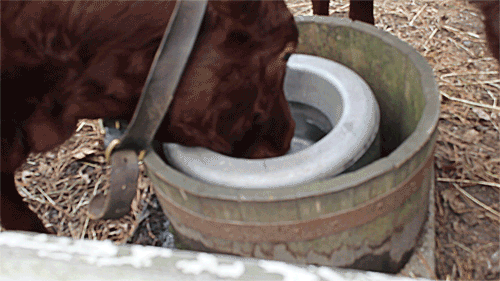
We caught one of our Milking Devon Cattle heifers taking advantage of this luxury in early December. Elaine Shirley, manager of our rare breeds, says these automatic bowls are a Godsend. For years, they used wooden troughs and the staff would spend cold mornings breaking up the ice in each of our 45 pastures. This is a way to encourage all of animals to drink and stay hydrated which is critical, even in the winter months.
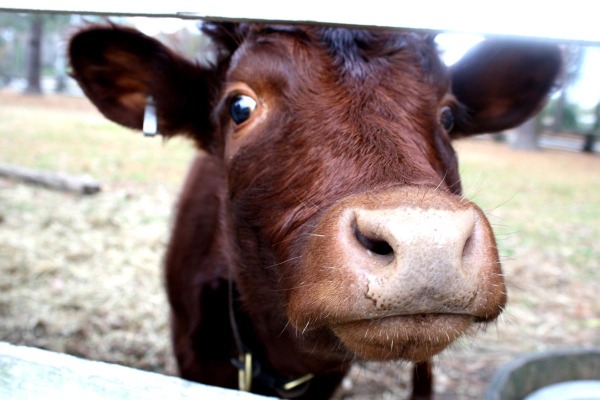
Now, let’s move on to our sheep! Believe it not, this breed of animals will actually lose their coats this winter.
Some of them will be shorn in January and February. Shirley says many people mistakenly assume they’ll freeze without all that wool. Not at all. She assures us they only need 1/8 to a 1/4 inch to stay warm and our sheep are sheared far from the skin, leaving plenty of “stubble” behind.
This process is also a matter of comfort for the pregnant ewes, helping them shed 12-15 pounds (roughly 10% of their body weight). They’ll gain back about twice that amount when they’re pregnant. Not only does removing all that wool make the mamas more comfortable, it will also make it easier for the lambs to nurse come spring.
In case you were curious (like us), none of the wool goes to waste. Much of it ends up right back in our historic stores, available for purchase. The more expensive batches are hand-spun and dyed by our own interpreters instead of being shipped to a mill that spins it into yarn, dyes it, and sends it back.
Just like the horses and cattle, the sheep are given a barn if they want to seek shelter but we’re told they choose to spend 90% of their time out in the pastures, exploring.
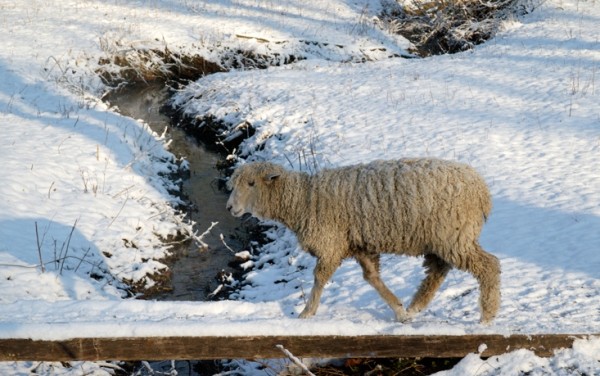 Our chickens are a whole other story! They go in at night to roost together for warmth. They also molt in the fall, shedding all of the defective feathers to make way for new ones to last them through the winter.
Our chickens are a whole other story! They go in at night to roost together for warmth. They also molt in the fall, shedding all of the defective feathers to make way for new ones to last them through the winter.
So when you see our animals out in the wind, rain, and snow—don’t fret over their comfort. It turns out they’re actually in their element… when they’re out in the elements!
Do you have winter pictures of our livestock you’d like to share? Just upload them below!
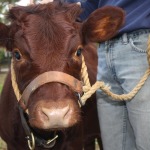
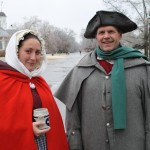
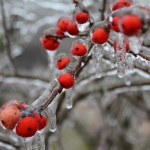
Mary says
I would love to be able to read the article linked about the interpreters, but the link doesn’t seem to work.
Great article Jessic! I feel better knowing the animals are not freezing. Kudos to the Coach and Livestock staff for all the wonderful care and love they give the animals.
When our daughter was growing up, we visited every year and spent many many hours at the sheep fields! The moment we arrived before we unpacked we would walk from one end to the other to find them. The staff was so kind, explaining all about the sheep and visiting the barns. For years our daughter wanted to be a shepardess and even worked the sheep into a first year college paper on Politics! Treasured Memories—she is now grown and will bring her children to visit the sheep! Thank you to a Wonderful Rare Breeds program, you are the best!
Working sheep into a paper on politics is pretty impressive! So glad you enjoyed the article, Paula.
Nice little article Jessica, love the pics. Thank you
You’re welcome, Kris! I love our animals so whenever we can do a post featuring them, I jump on the opportunity.
I love info on the rare breeds! The sheep and cattle are my favorite.
I’m glad you enjoyed the post Allison! My personal favorites are the horses although they’re all pretty adorable.
Thank you for the information.
You’re welcome, Barbara. Thank you for reading!